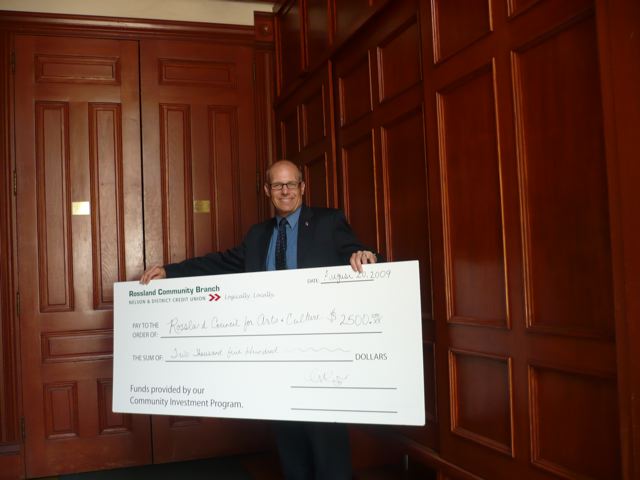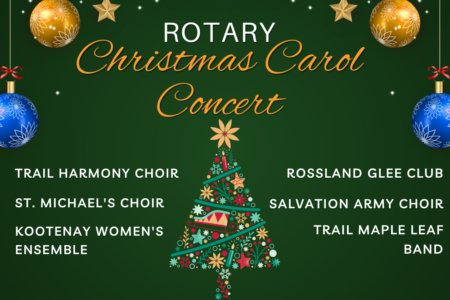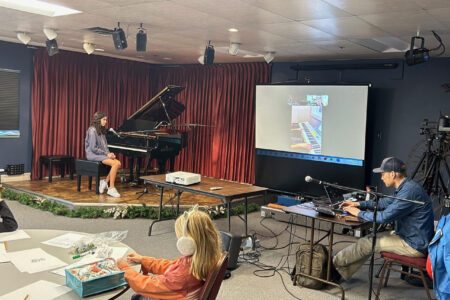Miners Hall Reno Dollars Go Into The Toilet
The second phase of the renovation project to refurbish the Miners’ Hall that got started last year is just about to wrap up. Following last year’s kitchen renovation, the most recent project focused on accessibility and the entrance to the old building.
Coordinated by the Rossland Council of Arts and Culture, the $20,000 project has addressed a few of a long list of needs for the gaining structure. Last year’s kitchen renovation left the electrical panel exposed in the lobby, creating an eyesore at the hall’s entrance. In order to conceal the electrical panel this project also constructed some cabinetry around the unit.
“At the same time (as the electrical panel project) there was a grant that came up from the “Measuring Up” provincial program,” explained Renate Fleming of the arts council. “The Chamber assisted in applying for the grant and they received a grant of $15,000. Basically the goal of the grant was to make things more accessible in the community.”
The Rossland Chamber of Commerce assisted with supplying and putting out a survey to gather the needs of the community as part of the grant process and a bathroom in the lobby of the Miners’ Hall was identified as a need.
$11,000 of the Measuring Up grant went towards the Miners’ Hall bathroom with the rest of the $15,000 going to other accessibility projects around the community, including new steps at the swimming pool.
The remaining funds were raised through contributions by the Rossland Rotary Club, The Nelson District Credit Union, fundraising by the Arts Council, local carpenter don Birtch and in-kind labour from the City of Rossland.
Originally planned to get underway last winter, the project got off the ground by March but was not without its challenges along the way. Along with delays due to certain people being away and not always having someone on-site to authorize various aspects of the project, the biggest challenge of the project was the question of whether or not the washroom should be wheelchair accessible.
The group’s desire was to create a wheelchair accessible washroom on the main level of the hall which was also what the building inspector wanted to see in the project. The space required for a to-code wheelchair bathroom facility would have necessitated ripping into the main hall to gain the extra space. The stairs would also have had to been moved with the access to them coming from inside the main hall. During construction, the building inspector shut down the project for some time with the hopes that it would be built to wheelchair accessibility code. Potential solutions including an elevator on the outside of the building were considered along with expanding it into the main hall but both options were significantly more expensive and cost prohibitive.
“It was making a choice,” added Fleming. “Do we maximize the use of the space and invest the money that was required? At this point I think everybody is being every careful with every dollar so this was our biggest challenge. With the fixtures we did use, we tried to keep it handicapped friendly and it may still be possible for wheelchairs to use it but it’s not quite to code for that. We did what we could with the space we had.”
In keeping with the cultural theme of the Hall, the new washroom was done in the same turn of the century heritage style as the hall itself.
The current project is very near completion and thoughts are already turning to the next maintenance and upgrade projects that will be needed in the near future. Among the major renovations coming down the pipe is a new roof for the hall. As with many hundred year old buildings, regular upkeep and maintenance are an ongoing, never ending project.
“There is so much that could be done to it,” said Fleming. “We always have the vision to develop the attic and the arts council over the years that I’ve been involved has put over $50,000 into the building of funds that we raised.”
Years of providing a first class small town venue to Rossland have endeared the building in many a Rosslander’s heart over the years. The strong connection between the people and the hall has served it will over the years.
“As a community there is so much volunteer work in that hall because everybody loves it and people want to see it used,” concluded Fleming. “It’s a great hall and people are volunteering because they want to see it continue and be at its best. Just like the kitchen project last year, lots of people are willing to help out when the building is in need.”


























